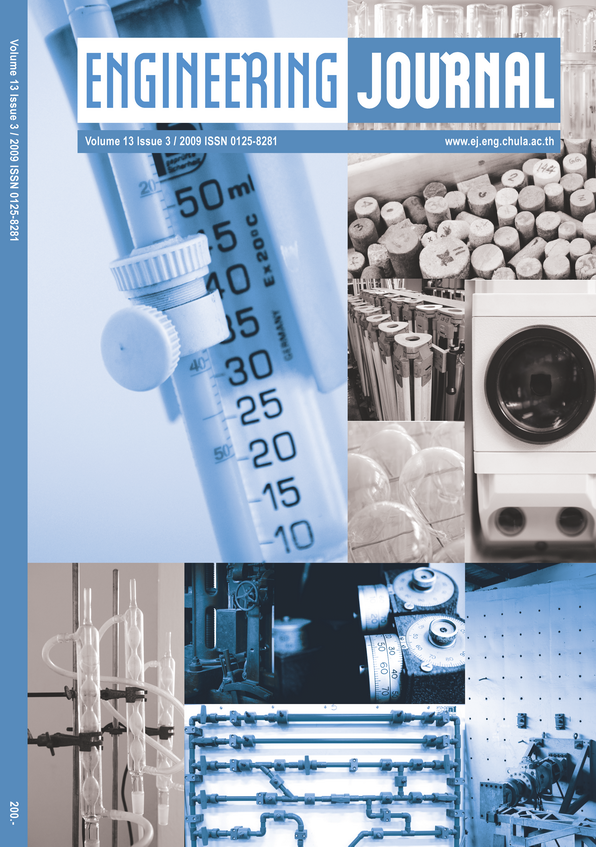Thermomechanical and Rheological Behaviours of Waste Glass Fibre-Filled Polypropylene Composites
DOI:
https://doi.org/10.4186/ej.2009.13.3.45Keywords:
Polypropylene, glass fibre, waste, surfboard manufacturing, composite.Abstract
The composites between the reinforced glass fibre wastes obtained from surfboard manufacturing industry and polypropylene were developed for value adding and environmental reasons. The thermomechanical and rheological behaviours of the composites were investigated. Glass fibre contents were varied from 5 to 30 wt%. The effects of maleic anhydride grafted polypropylene (MA-PP) compatibilizer on the behaviours were also determined. The results revealed that the addition of glass fibre was able to reduce the heat of fusion of the composite. Additionally, the tensile and flexural properties were increased with increasing the glass fibre contents following the rule of mixtures. The addition of MA-PP led to enhance tensile and flexural properties due to the improvement of the adhesion between matrix and glass fibre, which is correlated with morphological observations. From the rheological studies, the apparent flow activation energy revealed that the addition of glass fibre decreased the fluidity of the molten composite materials; however, it could be slightly improved by using MA-PP.
Downloads
Downloads

Authors who publish with Engineering Journal agree to transfer all copyright rights in and to the above work to the Engineering Journal (EJ)'s Editorial Board so that EJ's Editorial Board shall have the right to publish the work for nonprofit use in any media or form. In return, authors retain: (1) all proprietary rights other than copyright; (2) re-use of all or part of the above paper in their other work; (3) right to reproduce or authorize others to reproduce the above paper for authors' personal use or for company use if the source and EJ's copyright notice is indicated, and if the reproduction is not made for the purpose of sale.









